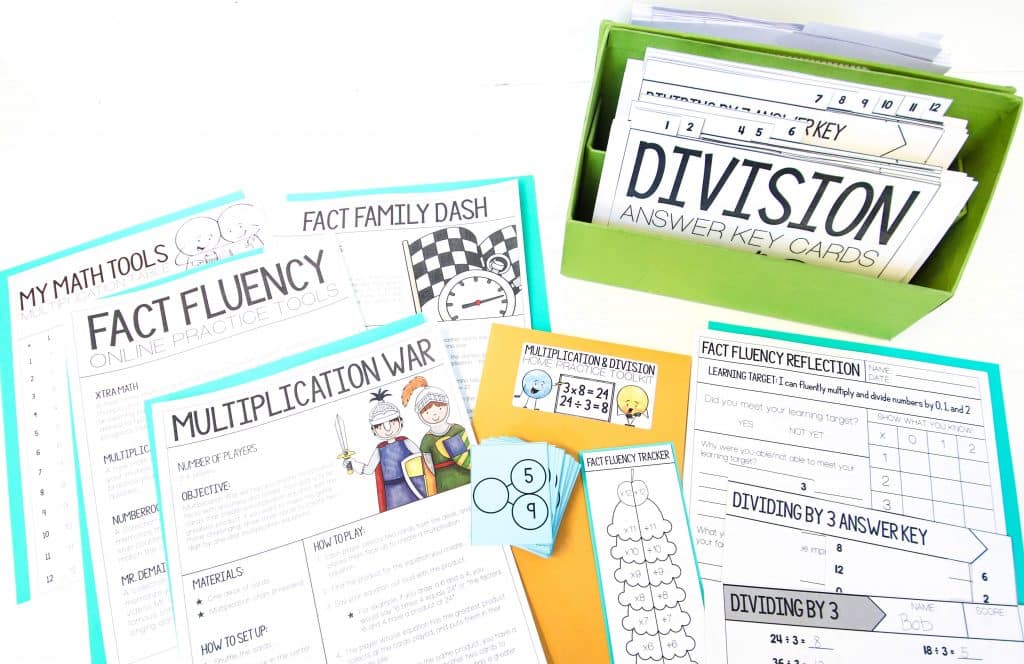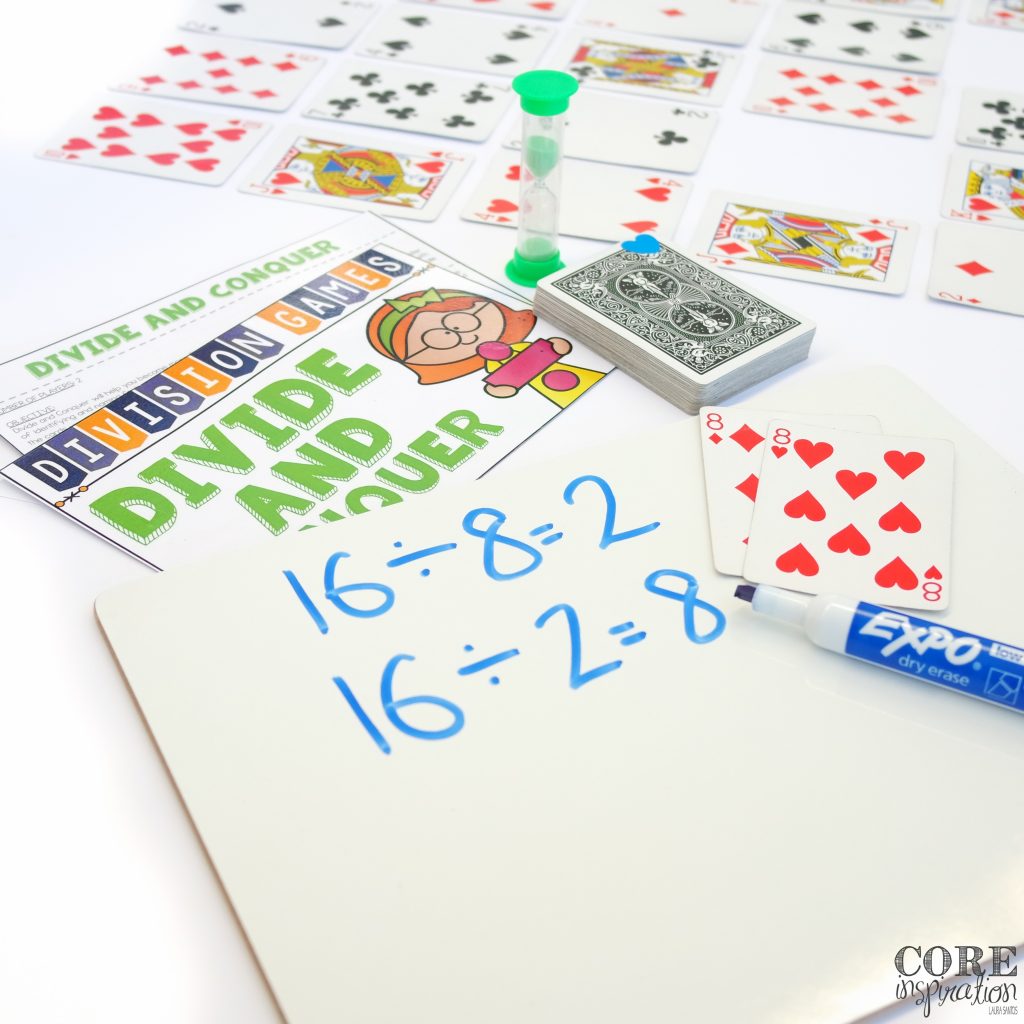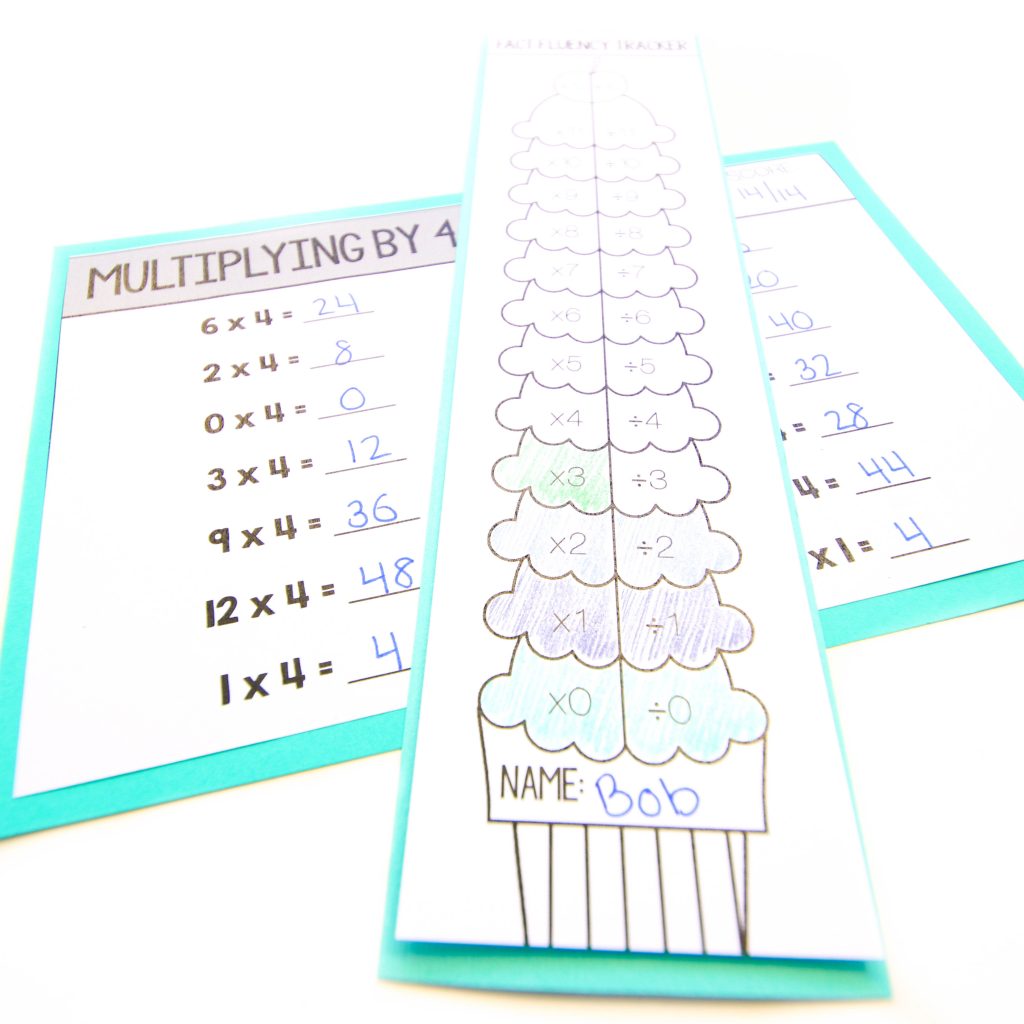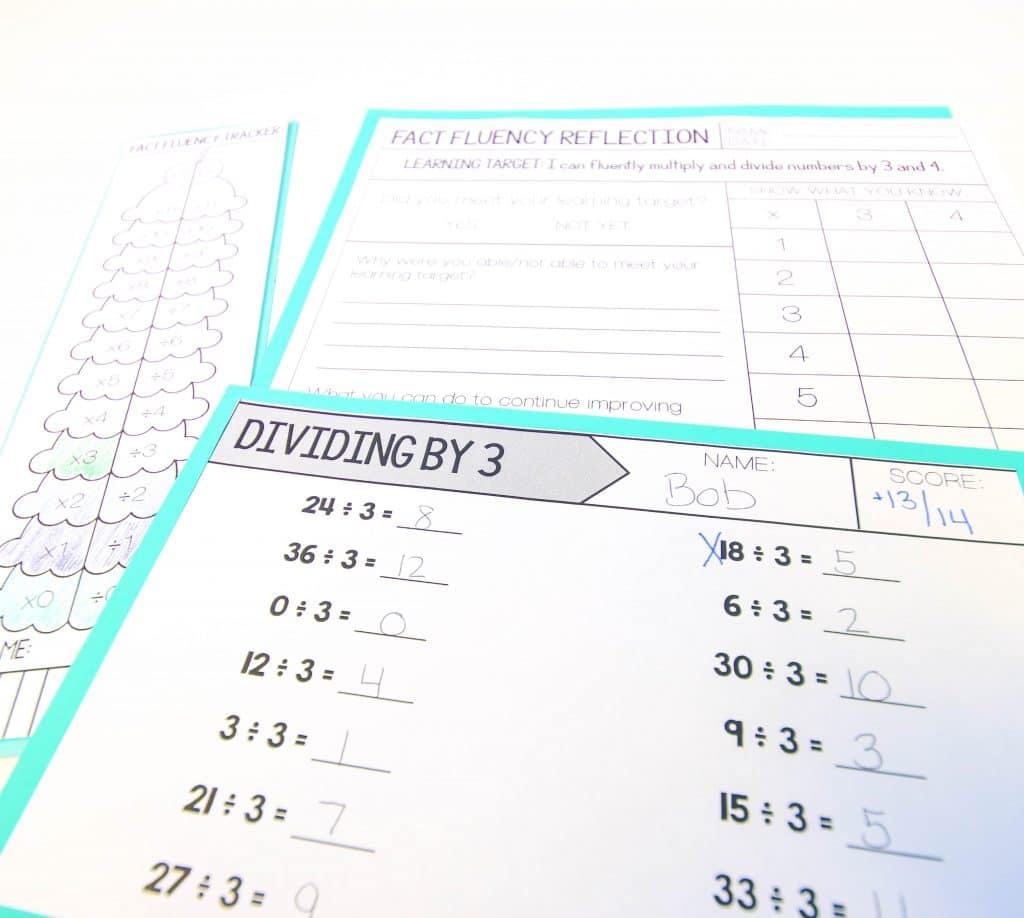
Looking for a way to boost math fact fluency in your classroom? Like most teachers, you probably want to avoid the nervous feelings students have when they’re introduced to the daunting goal of memorizing all their math facts AND understanding the reasoning behind them. You probably also want to avoid spending way too much time grading fact fluency worksheets. This is absolutely possible!
After a few years of comforting nervous students who worried they wouldn’t reach their math fact fluency goal “on time” and trying not to make a mess on the pile of fact fluency quizes I graded while eating my lunch, I decided to create a simplified system that helps each student acheive fact fluency while saving us teachers a ton of time.

When building fact fluency in my third grade classroom, I use a few consistent routines, and give students plenty of time to master their facts. To begin, students focus on building a deep understanding of fact families, and the reasoning behind them. In addition, they participate in frequent opportunities to build rapid fact recall through timed fluency activities (yes timed…but not in the traditional anxiety-inducing sense). Students also benefit from routine reflection activities when they set goals, and make plans for becoming more fluent mathematicians.
Developing this deeper understanding, and practicing rapid fact recall on a consistent basis in our classroom helps students develop the fluency they need without the stress that often results from a more traditional “timed test” approach.
When beginning our multiplication and division unit, our lessons are focused on understanding the why behind multiplication and division. To introduce the reasoning behind fact families, I use a variety of resources to plan my introductory lessons including:

My third graders spend two weeks building models that connect multiplication to repeated addition, and division to repeated subtraction. We build arrays and equal group models. We dive deep into the properties of multiplication, and discuss how they help us tackle those trickier facts.
As we work through these foundational lessons during Math Workshop, my students use pages from our math adoption, assignments on Khan Academy, math games, and problem solving task cards to practice the skills they’re learning. Once I begin to see these essential skills becoming second nature, I introduce the importance of fact fluency.
When first introducing fact fluency, I begin by praising my third graders for the foundational multiplication and division understanding they’ve built. Then I ask them what they want to accomplish next. Of course, they’re all eager to learn long division and multi-digit multiplication.
I write a complex problem on the board, and they quickly discover it’s really tedious to solve these problems using repeated addition, or by drawing elaborate arrays. They’re also a little stumped on how the Distributive Property can help them tackle the problem in front of them, but boy do they try.
After a few minutes of discussion and confusion, I call them together and quickly solve the problem in front of them. Then I ask, “How was I able to solve that so quickly?” Eventually, they come to the conclusion that I have memorized my fact families, and they want in. Our fact fluency challenge is launched.
The fact fluency challenge is a six month challenge that helps each third grader become a master of multiplication and division fact fluency. Each month, students work to master different fact families.
They study their facts at home on a nightly basis (more on that below), and complete fluency assessments in the classroom 3-4 days per week. During the months of November, December, and part of January, our in-class multiplication & division lessons and activities continue during Math Workshop.

We follow the fluency pacing schedule below so students have a clear picture of their learning targets, and can set home and school practice goals accordingly.
At the launch of the fact fluency challenge, each student is gifted a home practice toolkit. This ensures all students have access to all the resources they need to practice their facts for five minutes on a nightly basis. Included in this toolkit are:
At the end of Math Workshop 3-4 days each week, we have a fact fluency session. During this time, students demonstrate their progress toward meeting their learning targets. Most of my students use Multiplication.com’s auto-scored quizzes to demonstrate their fluency, while others use our paper quizzes. Here are the routines for each approach:
At the end of each month, my students complete a reflection connected to the learning target for that month. They circle whether or not that learning target has been met. Then they complete a portion of the multiplication chart to show which facts they have mastered related to that learning target. Their demonstration of knowledge is followed by a short series of questions related to fluency progress:

The first two questions help students take ownership for their learning, and the third gives them an opportunity to identify any resources they need to support their growth. These frequent reflections help emphasize the importance of tracking progress toward a big goal, give students time to celebrate their successes, and help them modify their practice routines if needed.
These reflections are sent home to parents to keep them in the loop on their child’s progress toward our big goal. If I notice a child has not reached a learning target, I jot a quick note on the back of their reflection page, or email parents directly about the importance of nightly practice using the resources provided in the Home Practice Toolkit.
I hope this post gives some insight into how we can hold students to high standards for deep understanding of multiplication and division fact families, while building rapid fact recall. Making math fact practice a consistent routine in our classroom helps students develop the fluency they need without the stress that often results from a more traditional “timed test” approach. I’d love to hear how you like to approach math fact fluency in the comments below.

I’ve been an elementary teacher for ten years, and love sharing tips and resources that make differentiated learning more manageable for you. Thank you for visiting.
Learn More
Dropping by with weekly tips, classroom strategies, and free content created with you in mind.
Join me and other 2nd through 4th grade educators in the Teaching with Core Inspiration Facebook Group. This is a place to collaborate, ask questions, and learn how teachers like you are using Core Inspiration resources in their classrooms. Hope to see you there!
© 2024 Core Inspiration ∙ Website by KristenDoyle.co
12 Responses
This is wonderful! Do you have a product to help students master addition and subtraction within 20? I teach second graders.
Hi Meagan, thank you for reaching out. I do have an addition/subtraction fluency resource. I really should include the link in this post. 🙂 You can find it here.
Warmly,
Laura
Hi Laura! This resource and blog post is so helpful, Thank you!
Quick question – what do you do when/if a student demonstrates mastery before the month is up on all of the required facts? Do you move them ahead to the next month’s mastery facts? Also, if some students demonstrate mastery of all facts before others, what do you have them do during fluency time?
Thank you!!
Hi Caryn, thank you for reaching out. Yes, I do have students move at their own pace. For example, some of my students completed the entire challenge within the first month. Those who finish the challenge early have a few options: they can play math games, work on task cards, work on their Khan Academy assignments, or read for the few minutes while others work on their quizzes.
Warmly,
Laura
Do you require students to get a score of 100% before moving on to the next fluency test level? Also, for the students who do not pass and need to retake the test, how many tries do you allow them to do in a given day? (Thank you for all your wonderful resources; Drop Box and Task Cards have made a huge impact on the success of my multiage class this year. My second graders are having a ball with Quad City!).
Hi, where can I buy these cards or resource?
Hi Myrna,
Thank you for reaching out. You can find all the fact fluency resources featured in this post here.
Warmly,
Laura
Hello! I absolutely love this system and am purchasing the at-home toolkit to go along with my “system”. I use multiplication.com self correcting tests as well and have created a digital incentive program for students to record progress and build a virtual banana split. I got tired of them losing their record sheets and splits, lol. Thanks for this addition!
Hi Joan,
Thank you for taking the time to reach out. Glad to hear the resource will be helpful in your classroom. 🙂
Warmly,
Laura
Hi, I am a 2nd grade teacher & I am wondering Do you have a fact fluency kit for addition & subtraction?
Hi There! Yes, I do have a fact fluency toolkit for addition and subtraction. You can find it here.